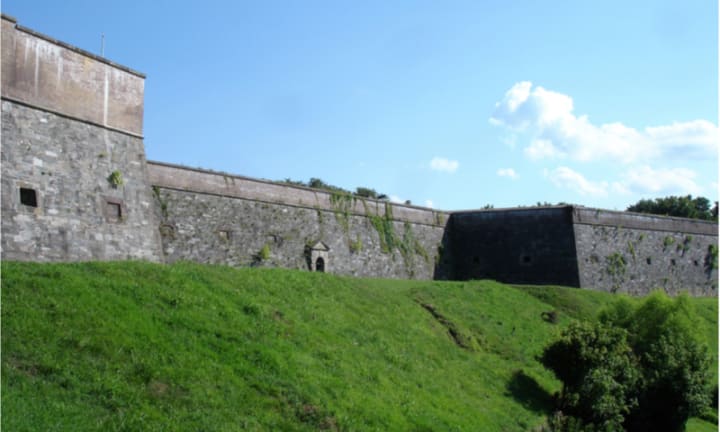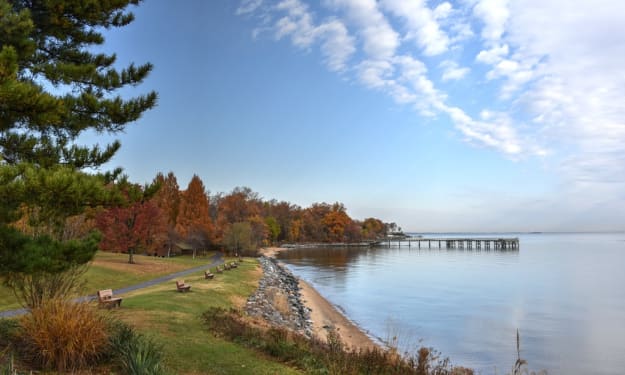
In order to tell the story that shaped the existence of the unincorporated census designated place known as Fort Washington, MD where over 24,000 residents live today and see how this town became the good place to live that we know today, we’ll have to go back into the nation’s history. With everything that happened since the first days of American history, the fort that gave this town its name helped shape the America that we know today. There were many battles and wars that have had at least some connection to this historical place and we’ll walk you through the most important moments of both Fort Washington’s and D.C.’s history.
From the day it began as a mere project, Fort Washington has a purpose. Its location was also picked strategically on the Potomac River, just below Washington D.C. and it served its purpose whenever it was needed. The history we know today might have been quite different if not for the construction and use of Fort Washington. But let’s get into the details of this historical monument and see exactly what came to be as a result of its existence.
The Real First Fort of D.C.’s Defense

While Fort Washington is responsible for many pages in the history books, it isn’t the first fort to have been constructed for the sole purpose of defending the capital. Fort Warburton holds that title. While short lived and scarcely remembered, Fort Warburton was built between 1808 and 1809 on the same location, on the eastern shore of the Potomac River and a few miles away from Washington D.C. Having had the same purpose of defending the nation’s capital the fort did not endure the first battle it faced. During the War between the British and Americans in 1812, at the Battle of Bladensburg, the fort was destroyed.
During the battle, it became obvious that the British were winning as 4,000 Redcoats (the british soldiers) advanced on the Patuxent River, at a safe distance away from the fort and burned down many buildings that belonged to the government in the capital, like the Capitol and the White House. Not only three days passed and 10 Royal Navy warships started to advance towards Fort Warburton. Shelling commenced as an intimidating tactic. As the commander of the fort didn’t want another strategically located military establishment to be taken over and occupied by the British, he organized the evacuation of the fort before he made sure the fort was destroyed by blowing it up. This was considered deserting even if the British were unstoppable and the commander, Capitan Dyson was court martialed subsequently.
The Fort that Made History

Seeing as the capital was left defenceless after the War between the British and Americans, not only a month had passed and the Secretary of War at the time, James Madison, started a plan for a new fort on that same location. This is the Fort Washington that we can still see today on the right side of the Potomac River.
There were two architects that worked on the completion of the fort. The first was Pierre L’Enfant. He was assigned with designing the fort, its layout and its construction. Upon failing to adhere to the requests made by the government L’Enfant was released from his assignment in July 1815 and Lieutenant Colonel Walker Armistead took his place. With this came a new design, approval of the design which allowed for construction to continue on the fort only in late 1815. It took nine more years for the fort to be completely built but by 1824 there were still no guns installed so that the fort could actually be used for its real purpose.
Modifications were then added to the fort during the 1840s for several expansions as well as 88 platforms for guns were installed. This allowed for guns to be mounted on the fort, but only in 1846.
A Fort to Defend the Capital

Up until the Civil War there was no real use for the fort and only a few soldiers were stationed there. Once the Civil War started its true intent became paramount. As the Confederates advanced towards Washington D.C. a small garrison of 40 Marines were stationed at the fort as fear of a hostile occupation took over the capital. When Fort Summers was surrounded by fighting in April 1861, the 1st U.S. Artillery were sent to man the fort by the U.S. War Department.
As it was the only fort that was actively protecting Washington D.C. during the Civil War, George Washington Custis Lee made plans to further fortify the city. Even though he eventually resigned from the military and joined the Confederate states, his plan was put in motion. Soon after that 68 earth made forts were erected around the city and Fort Foote took over as Washington’s principal defense from Fort Washington during the Civil War.
The base of operation, however, returned to Fort Washington in 1878. The reason why Fort Washington couldn’t have been of real use during the Civil War were the rifled artillery that were developed during this time. As Fort Washington was a brick structure it could easily defend against cannonball fire as the shells could not reach a high velocity, nor were they particularly accurate. It wasn’t easy to hit the same spot again and again with cannonball fire. Rifled artillery shells, however, had a similar aspect to bullets, only larger and spun in a circular motion as they reach their target, similar to a football. This made them faster, more precise and capable of destroying walls made out of bricks, able to dig three times deeper than cannonball shells. This became clear during the attack on Fort Pulaski that in only 30 hours was destroyed to such lengths that the Confederates had to surrender.
A Fort that Stood the Test of both World Wars

Once the government came to understand the Forts vulnerability it was too late to make the necessary changes. The country was financially challenged and much of the territory was left in ruins. One thing did change, even at that time. The guns were replaced with their more modern equivalents.
Once the threat of another war, this time with Spain, approached the U.S. in 1880, the time came to invest in the coastal defenses. William Endicott initiated a new system, called the Endicott System of Coastal Defenses. With this came concrete installations and rebar batteries that could resist an assault with rifled shells. These were smaller than the forts built until that point, they were designed with guns that were able to produce some real damage to the armor-plated hulls of the ships used at the time. Around Fort Washington there were eight such batteries installed and they are still standing today.
During the First World War, another purpose was found for Fort Washington and that was in its guns. Seeing as it started as a European battle, guns were sent from all over the county to France so they could aid in the European effort. From Fort Washington at least two guns were dismounted and sent to France.
During the 1930s the fort had been used as a base for the soldiers in Washington. This came to an end briefly during the Great Depression as it was then used as a base of operation by the Civilian Conservation Corps for the D.C. area who worked on giving paying jobs for men to build parks as well as other public works.
The shock came to the U.S. nation when Pearl Harbour was attacked. Because of this attack that happened in December of 1941, as there was a need for a military organisation to change tactics and join in the second World War effort, the fort was once again returned to its military purpose. The fort then became the Adjutant General Officer Candidate School as well as the base for the Women’s Army Corps and the Women’s Army Auxiliary. In order to be able to provide shelter for the troops, around 150 buildings were added to the fort. After the war and only for a few months those buildings wound up being used for a hospital and, at the same time, other government agencies held offices there. Ultimately, all the buildings that had been constructed around the fort for the second World War effort were demolished as they were no longer needed.
A Fort that Stands the Test of Time

Although current warfare has no more need for stationary forts and advanced technologies make these forts as well as batteries useless for defensive purposes, which were not long ago their sole purpose, Fort Washington is still standing. As many other forts across the nation were and are still used as military schools or training facilities for the troops, this did not happen to Fort Washington. With the end of World War II, Fort Washington was demilitarized and the grounds were opened to the public as part of the National Park System in 1946.
For history buffs, Fort Washington is the perfect location for commemorating a long and standing history of how the many coastal fortifications impacted our nation. People from all over the country can visit whenever they want as Fort Washington is opened every day from 8 am to sunset. In order to be able to witness the life of this sole standing guardian of our country’s capital, there is an audiovisual program inside the visitors center. Both the visitor center and the actual fort are open from 9 am to 4 pm during the winter months while summer months they are open to the public from 9 am to 5 pm.
Conclusion
History is only as good as the people who live it and Fort Washington, MD has such a rich history that needs to be known, taught and learned by the people of our country. Because of places like Fort Washington, MD and Greensboro with the Greensboro Sit Ins our country matured, learned and moved away from a troublesome past. History teaches us lesson after lesson and it is our duty to remember it. The people living in Fort Washington, MD know and respect this history. Living in a town that grew because and in spite of all the trouble it faced in the past, with British takeovers and wars that shaped the nation while they destroyed so much in their wake, Fort Washington, MD became a place where people learn from each other and move forward. If you want to relocate to a place where history hasn’t been forgotten, get in touch with real estate agents in Fort Washington, MD for additional help in finding the perfect family home in this place of history.
Let us know in the comments section what you think this Fort means to the country’s history. Like & Share with family and friends who always jump at the opportunity to learn a bit more about our history.
About the Creator
Beni Restea
I'm a member of the content team at The OFFICIAL Real Estate Agent Directory®, producing countless informative and trendy real estate articles for RealEstateAgent.com and its many outlets.






Comments
There are no comments for this story
Be the first to respond and start the conversation.